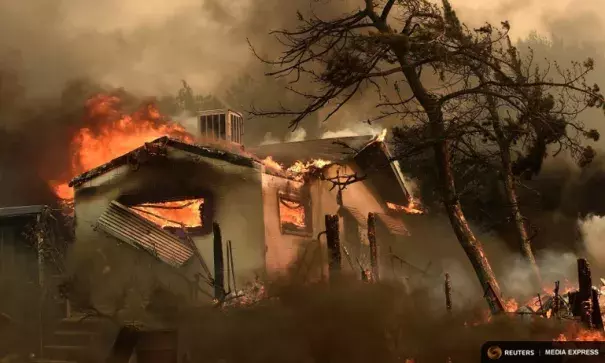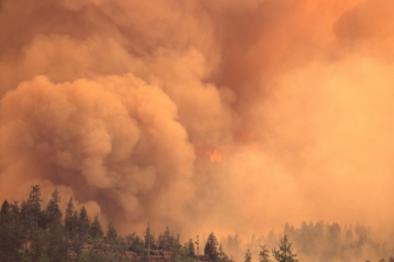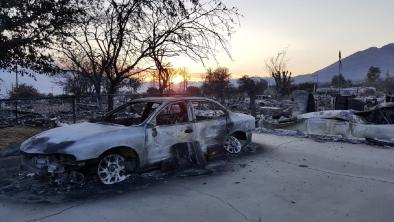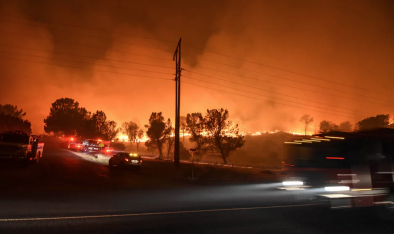Fires Flare Up Out West, While Rains Flood East

[B]oth large wildfires and heavy downpours have been on the rise in the U.S. in recent decades. Both trends are expected to continue into the future if heat-trapping greenhouse gases aren’t curbed.
Wildfires are a familiar summer danger across the West because that is the region’s dry season, but heat waves can exacerbate the risk by drying out vegetation.
The scorching heat wave that sent temperatures in the Southwest to record-breaking levels last week, combined with dry, windy conditions, helped do just that, meaning there has been ample fuel for any sparks from human activity or lightning to grow into full-fledged conflagrations.
Now, another heat wave is settling in. While it’s less intense than last week’s, it is covering a larger area.
“Now that we're seeing a second wave, fire risk is even higher than it was earlier as fuels have already been primed to burn more intensely,” said Daniel Swain, an atmospheric science Ph.D. student at Stanford University. “Hopefully we don't see any major wind or dry lightning events in the near future.”
...
The situation was the polar opposite on the other side of the country: On Friday, a frontal system collided with an area of extremely moist air over West Virginia and “it just absolutely blew up,” sending torrents of rain down on the state, said Andrew Beavers, a meteorologist with the National Weather Service office in Charleston...
While such heavy downpours have been on the rise nationally and are expected to become more common and more intense as temperatures rise, saying something about the potential role of warming in this particular event is difficult.
That is because the storms were localized and driven by convection, and climate models have a difficult time accurately capturing such features, said Friederike Otto, of Oxford University's Environmental Change Institute, who works on such attribution analyses with the Climate Central World Weather Attribution program.
More widespread extreme rainfall, like that which recently deluged parts of France, are easier to analyze and therefore to tease out the influence of warming, she said
Related Content





